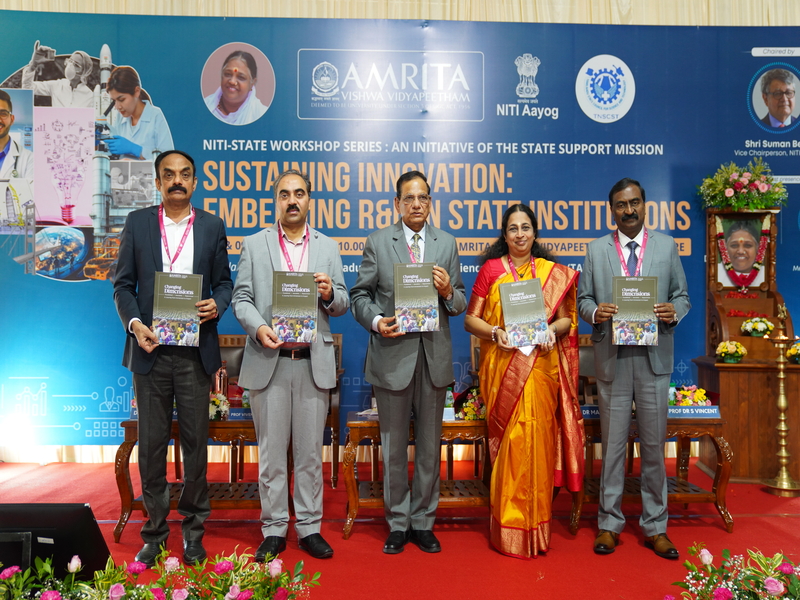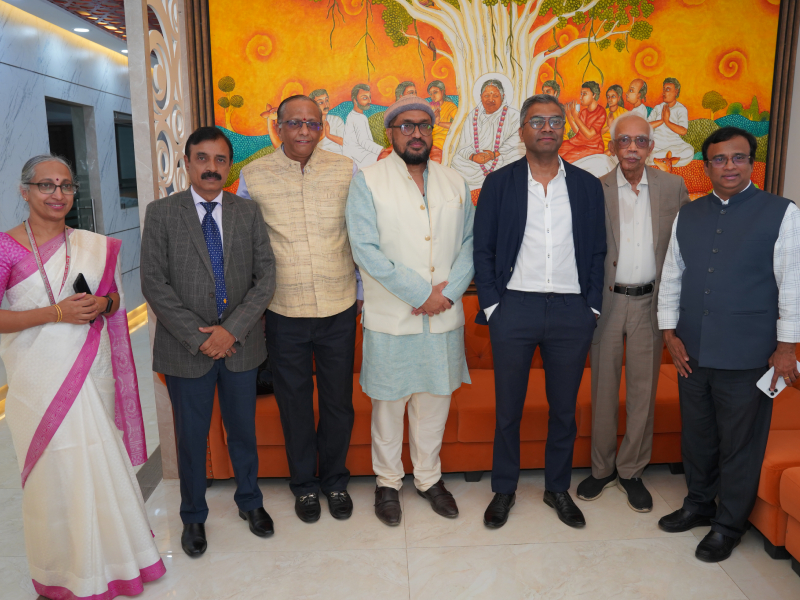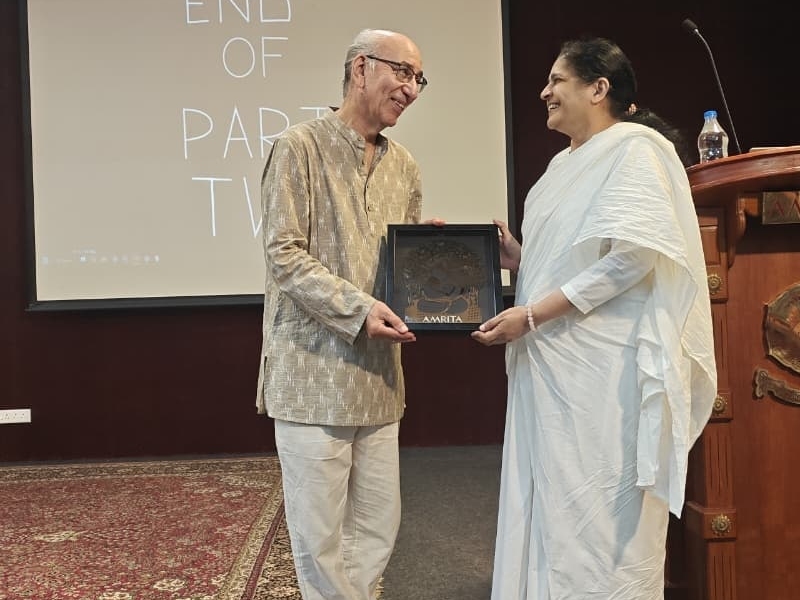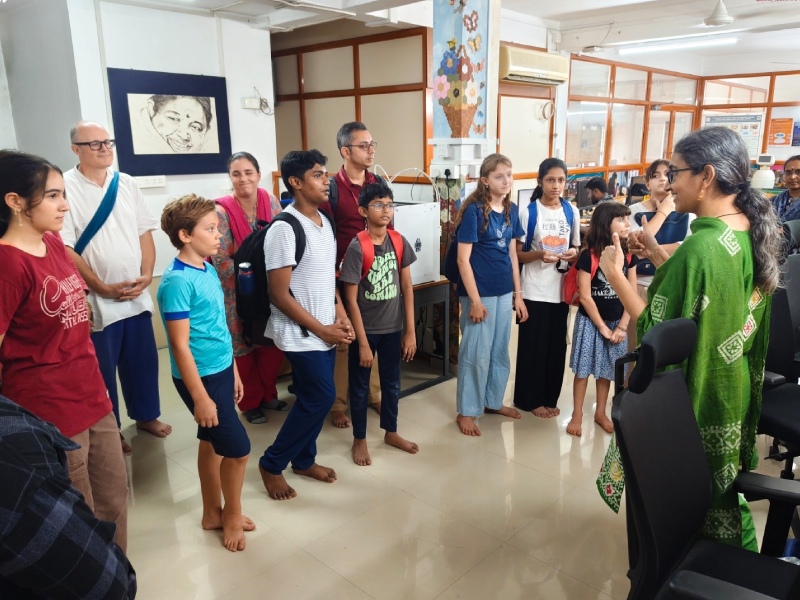At the inaugural session of the International Conference on Sustainable & Resilient Futures (ICSRF 2025), Amrita Vishwa Vidyapeetham launched SREE – a geo-spatial, crowd-sourced platform designed to strengthen community sustainability and resilience across rural India.
Developed by researchers at Amrita in collaboration with the UNESCO Chair on Experiential Learning for Sustainable Innovation & Development, Esri India Technologies Pvt. Ltd., and the Department of Science and Technology, Government of India, SREE is the latest in a series of innovative solutions addressing India’s rural development challenges.
ICSRF 2025: India’s First Carbon-Neutral Academic Conference
ICSRF 2025, hosted at Amritapuri, is India’s first carbon-neutral academic conference, conducted in alignment with ISO 14068 standards. The four-day global gathering is organized by Amrita’s UNESCO Chair, the School for Sustainable Futures, and the SustIN Network, bringing together 700+ participants and 80 distinguished speakers from around the world.
Why SREE Matters
Rural India continues to face deep challenges—unsafe and scarce water resources, agricultural infeasibility, unstable livelihoods, limited education, inadequate healthcare, and lack of skill development. Many communities remain unaware of ecosystem services and their vital role in sustaining livelihoods.
Such gaps often lead to cycles of unemployment, poverty, drought, and ill health. By providing early insights into local vulnerabilities, SREE enables communities to anticipate and mitigate risks, improving resilience at household, village, district, and state levels.
Features of the SREE Platform
The SREE platform, powered by its mobile application “Empower Community”, integrates GIS-enabled spatial data and crowd-sourced inputs to create a comprehensive sustainability and resilience index.
Key features include:
- Thematic Focus Areas: Agriculture, Education, Health, Water, Skills & Livelihood.
- Community-Driven Data: Information directly entered by villagers through the mobile app.
- Geo-Spatial Mapping: Identification of local resources, trade-offs, and synergies.
- Sustainability & Resilience Score: Derived from crowd-sourced indicators.
- Language Translation Support: Enabling effective participation across linguistic and cultural contexts.
- Bridging Researchers and Communities: Eliminates communication barriers by making the app community-operated.
- Real-Time Updates: GIS-enabled tracking ensures continuous data collection, independent of climate variability.
Methodology & Index Building
SREE’s framework is based on NITI Aayog’s National Multidimensional Poverty Index methodology. Indicators across five dimensions are equally weighted to generate composite sustainability and resilience scores.
The data is visualized through ESRI’s ArcGIS Dashboard offering:
- Interactive Maps of households and villages.
- Indicators Tables categorized by themes.
- Spatial Variability Analysis through filters for region-specific insights.
- Aggregated Indices displayed via gauge charts.
- Thematic Dashboards with detailed dimensions, weights, and comparative graphs at household, village, district, and state levels.
This enables policymakers, researchers, and communities to identify vulnerabilities, track progress, and take timely corrective actions.
Empowering Villages for a Resilient Future
By capturing temporal and spatial variability of resilience indicators, SREE provides dynamic insights into how communities evolve over time. It empowers rural households not only to understand their challenges but also to participate in shaping solutions, creating a powerful bottom-up model for sustainable development.
With this innovative launch, Amrita Vishwa Vidyapeetham reinforces its commitment to advancing grassroots resilience, sustainability, and social impact in alignment with Amma’s vision of inclusive development.




